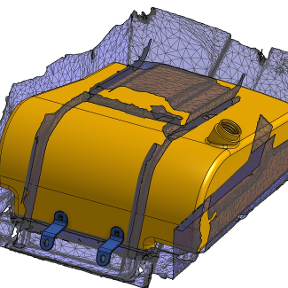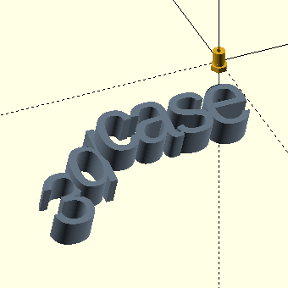Welcome to the Onshape forum! Ask questions and join in the discussions about everything Onshape.
First time visiting? Here are some places to start:- Looking for a certain topic? Check out the categories filter or use Search (upper right).
- Need support? Ask a question to our Community Support category.
- Please submit support tickets for bugs but you can request improvements in the Product Feedback category.
- Be respectful, on topic and if you see a problem, Flag it.
If you would like to contact our Community Manager personally, feel free to send a private message or an email.
Best Of
Re: Routing curve & Control point curve - Introduction of two new features for 3D curve creation
In case you miss this elsewhere, @GregBrown did a in-depth video on Routing curve now that it's been released.
 S1mon
S1mon
Re: Improvements to Onshape - March 13th, 2025
I imagined that @GregBrown would make a video about routing curves with this release, and now it's out:
 S1mon
S1mon
Re: How to use loft tool to combine 2 imported objects with dissimilar geometry
If at all possible, import STEP or Parasolid of those parts. What you have is a mesh which is much harder to work with. The shapes are simple enough that you could remodel them, but it would be easier if you didn't have to.
 S1mon
S1mon
Re: How to use loft tool to combine 2 imported objects with dissimilar geometry
This is not really project to start with while being new to CAD AND new to Onshape.. I'd suggest using the learning.onshape.com website first then come back and try to model these objects from scratch instead of trying to jump right into hybrid modeling. I understand you may not be familiar with that term but believe me, doing what you want to do is going to be challenging with your current level of CAD experience.
To answer your question though. learning how to use constraints is how you get things to align.
 MDesign
MDesign
Re: Progressively smaller feature patterning
I don't have access to view it. You'll have to make the document public. Without looking the first thing to check is that your second, but not first width variable has been included in the Linear Pattern feature as a feature to pattern. So for example you may have an initialized variable for #width = 5 mm or something, then later you have #width = #width + 2 * mm.The second one is the one to include in the pattern feature, since it's the one you want to re-run every time.
Re: is it possible deactivate a thread so you will not be notified?
As an example I can give you this thread
This was resolved last year and I assigned answers. For me this was a closed issue but 5 months later, but could be a year or two, somebody else does not understand and reopens the thread by posting their view of the matter. It may or may not be related but in this case it is.
To me this should be dealt with differently and these posts should be closed so that if somebody has a similar issue, they should start a new thread if the answers are not helping them. That way the question will be visible too all and new people can have a go at answering them.
Re: Progressively smaller feature patterning
you could try the increment variable FS put that in your linear pattern (feature pattern) and indeed make sure 'reapply features' is on.
Re: How can you wrap/ project a pattern onto an irregular lofted surface? Is it possible?
The Attractor Pattern did exactly what I needed. Thank you!!
Re: Issues with loft function
It's a little hard to tell all we need to know from the view-only link (can you make it so we can copy?)
But there are a few obvious things starting with the profiles:
- the curvature is extreme, in fact goes more or less to infinity, at the trailing edge. This won't go well in your loft…
- looking at the leading edge, the curvature is also suspect, but the diagnostic combs can't capture the full extent since they are being scaled by that trailing edge….
- You have a single spline for the full profile. It is much better to have 2 splines, one for top surface, one for lower surface of the blade. This is especially true if you are using a zero thickness (sharp) trailing edge (and the reason for your bad curvature at the TE currently)
- the spline has a very large number of points. It would be better to do some smoothing and reapproximation. What was the data source you sampled these points from?
I think with cleaner profiles the loft would be much more successful, so I suggest looking at that first. The path with 50 sections will be the next thing once the profiles are addressed…
For clean aero profiles there is a custom feature I helped develop last year. Give it a try, there are some links on the description page to provide more background. While there are many (about 95) different profiles included, I don't believe NACA8710 is one of them currently. You might want to contact Holbrook Aerospace if that one is vital.
Re: purpose of setting the origin or chosing a new defined mate in a context design?
What I meant was that the new part's coordinate system would match (better than follow) the mate connector.
This helpful if you need to create an in-context part that is not "aligned" with the assembly x,y,z axes.
If you create the mate connector in the assembly and use for the in-context part, then you can create a mate connector at the origin of the part and mate that to the assembly in-context mate connector.
Then your part will follow that assembly mate connector. Note that context don't update automatically, you have to intentionally "update context" if you move the mate connector in the your assembly for the part geometry to update.







